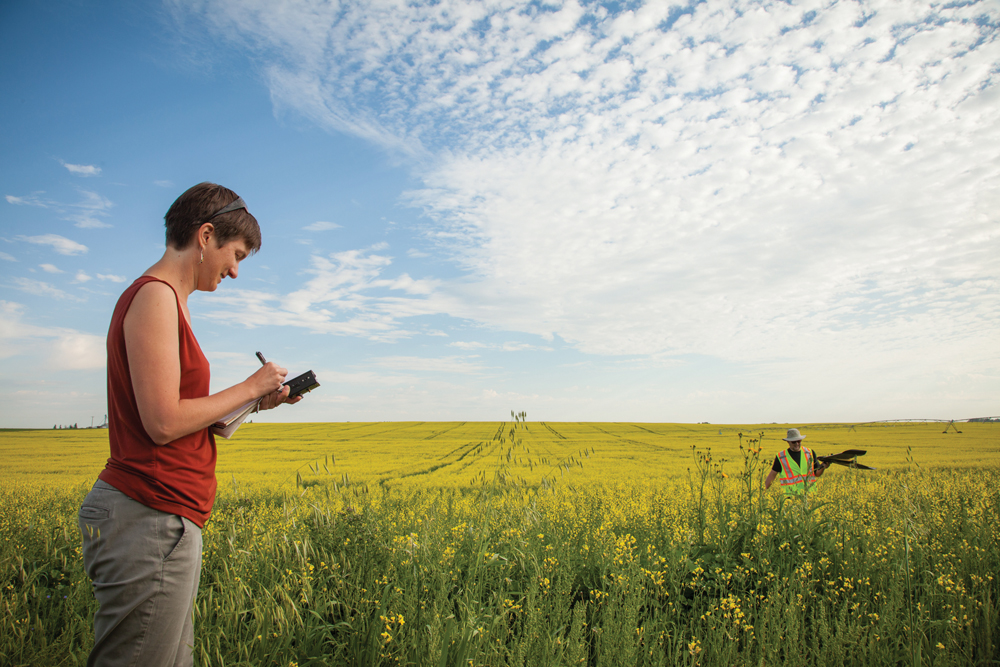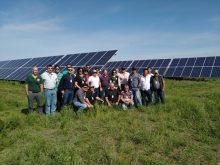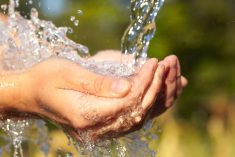At first glance, subsurface drip irrigation seems like an obvious winner as it gets water directly to the roots and there’s less evaporation.
But that’s not the whole story.
Subsurface drip irrigation is a literal fight against gravity — you’re trying to make water go from side to side when it’s inclined to go down below the root zone. And it can create dry zones in row crops.
Still, the method can be competitive against traditional overhead irrigation, according to Lethbridge College researcher Willemijn Appels.
Read Also

Farming Smarter receives financial boost from Alberta government for potato research
Farming Smarter near Lethbridge got a boost to its research equipment, thanks to the Alberta government’s increase in funding for research associations.
But the application approach is different.
“You might have to start fairly early and then repeat smaller applications every day to give the water time to move — you want to prevent water moving downwards the best that you can,” said Appels. “If the soil is very wet then all the water will just move down.”
And you have to be patient.
“Expect to see results between your drip lines not before a week or maybe even a week after.”
Pros and cons
In subsurface drip, pressurized water runs through buried hard plastic lines with small passive emitters spaced at intervals. The emitters release water at a very slow rate.
The big advantage is its efficiency, but there are others as well, including having a drier canopy that is less susceptible to certain crop diseases.
“We also know that pollinators don’t like overhead irrigation,” said Appels. “Bees stay near their huts when there is (overhead) irrigation but with underground irrigation you can decrease the time that they take shelter.”
Not surprisingly, subsurface drip is used more often in orchards and vineyards than crops grown under irrigation in southern Alberta such as canola and soybeans. There’s a reason for that, said Appels.
“With an orchard or a vineyard you put a line right next to all the plants but in a field crop that’s not feasible,” she said.
That’s why dry areas are an issue.
“Row crops are grown in such a way that you have your rows spaced much closer together than your drip lines, so you have some plant rows that are in the middle of these drip lines that are the last to get water if they get any at all,” she said.
Go small
The Lethbridge College research project was divided into two parts. The first was an indoor component in which researchers used three raised beds containing one soil type each (sand, clay and loam) to test a number of factors, including line depths, emitter spacings and time and frequency of applications.
Using soil moisture sensors, the different soils were tested for their ability to retain water long enough for roots to become adequately wetted. (Alfalfa was grown as it is a common irrigated crop in southern Alberta.)

The second component involved local volunteer producers with subsurface drip growing a variety of crops (including corn, dry beans, and wheat). In this case, the researchers just observed what was happening in the field.
The key takeaway, the researchers found, was to apply small amounts of water daily early in the growing season. This enables the water to move better from side to side, allowing plants located farther away from the drip lines to better pick up moisture.
Larger applications, meanwhile, tend to saturate the soil and force the water down below the root zone, said Appels.
“The speed at which water moves depends on how wet or dry your soil is — you want to have it moist but not saturated,” she said. “The drier the soil is, the more time it will take to move the water away.”
So how much is too much?
“A large application would be 12 hours or a full day of just letting it run — that’s too much,” said Appels. “It saturates the soil beneath your emitters and generates a larger flux downwards.
“I would say anything between four and seven to eight hours (per day) would be considered a smaller application.”
Soil type also matters. Those with a lot of small pores, such as loam, hold water better against gravity than sandier soils.
“In southern Alberta most of the soils contain quite a bit of loam so we’re in a relatively good situation there.”
Spacing, depth made little difference
Interestingly, the researchers found emitter spacing (they used 24- and 30-inch spacing) didn’t make much difference.
They also tested line depths of eight and 12 inches. Both had pros and cons, but seemed to work equally well, said Appels.
“Having (lines) close to the surface makes it a little bit easier to get moisture near the surface where it’s needed for germination,” she said. “However, you run more risk of cutting the lines when you work your land.
“With the 12-inch (depth) you have that extra four inches you need to cover with your moisture applications. It just takes longer to wet up the soil under conditions of emergence and germination right at the beginning of the season.”
Fertigation may be the killer app
When viewed strictly as an irrigation method, subsurface drip is “a really nice tool to have in the tool box” but Appels doesn’t expect it to replace overhead irrigation.
But that picture could change radically if fertigation — adding fertilizer to water — enters the scene.
“We are hoping to do some fertigation studies because industry suggests that gains can be made by increasing nutrient uptake and making better use of expensive inputs,” she said. “It would be good to get some actual validation.”
The researchers attempted to gather some fertigation results during the study but in this case their attempts didn’t work out, said Appels.
“The soils that we excavated for the indoor facility were agricultural topsoils and we didn’t test them for their nutrient content when we dug them up. They contained so many nutrients at the moment that you could grow anything in there without any fertilizer so it didn’t make sense to do any fertigation experiments.”















